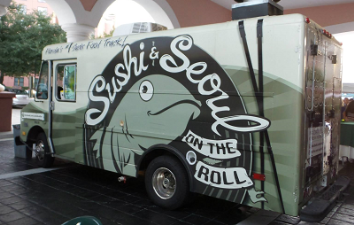Consumers Demand Functional, Flavorful Foodservice 12/14/2016
I start off every morning with a Bulletproof coffee – one of those with butter from grass-fed cows and coconut oil that was popularized by bio-hacker and entrepreneur Dave Asprey. It has a taste and texture similar to a latte, except it leaves a shiny sheen on your lips.
Not only is it flavorful, but the healthy fats (which include lots of medium-chain triglycerides) provide long-lasting energy, enhance cognitive function, and a myriad of other benefits. But I wouldn’t drink it if it tasted like crap.
Like many of today’s healthy-minded consumers, I want every food or beverage item I ingest to not only appeal to my taste buds, but to also provide some sort of nutrition or functional benefit. And I’m willing to pay for it (Kerrygold Pure Irish Butter retails at $3.99 for two sticks – 8 ounces -- and I never hesitate to throw one or two in my basket each week).
And the foodservice industry has stepped up to address these consumers, many of which fall within the Millennial demographic, according to interviews with suppliers and operators at ECRM’s recent Foodservice: Natural, Organic & Better for you EPPS.
“Millennials will waste no time deciding to spend more for gluten-free, non-GMO, natural and/or organic, just to walk away with a feeling that they made a better choice for their health,” said Kevin Consolo, ECRM Category Development Director - Adult Beverage & Foodservice. “This generation has begin to take more of the market share of consumption, and ECRM has created a natural, organic and healthy foods division in both retail and foodservice to allow buyers to help retailers and foodservice operators find the products to meet this growing trend.”
Indeed, many of the trends we’ve seen happening among products for home consumption at our Natural, Organic & Specialty Foods EPPS are now extending to the out-of-home setting, whether it’s fine-dining establishments, fast-casual settings, college and university foodservice – especially college and university foodservice – and even food trucks. Attention to wellness and sustainability is here to stay.
Grass-fed
As with the butter for my morning coffee, other products with ingredients from grass-fed animals click of both the wellness and sustainability boxes in the consumer’s mind. That’s because, in addition to being healthier and more tasty, grass-fed animals from which they are derived are raised in a more humane manner, and according to research presented at the EPPS by Parker Townley of Fair Trade USA, Millennials are driving the demand for these products.
“One trend we are seeing is a lot of grass-fed beef and dairy,” said David Sprinkle, Research Director at Packaged Facts, another presenter at the EPPS, who discussed wellness trends in foodservice. “Grass-fed beef is leaner, has higher-quality Omegas and is also a stronger flavored beef. It also brings a regionality that consumers appreciate. The kind of grass you use, the seasons involved, affect the final taste of the product. It also gets back to the traditional way of treating livestock [which addresses the sustainable-sourcing needs of many consumers.]”
As with traditional grocery items, consumers want more transparency in their foodservice choices, clean labels, and whenever possible, want to actually see the ingredients that they are eating, which is one reason bowls are becoming increasingly popular as a service method, as they enable customers to pick and choose what goes into them – for a variety of flavor and health options, and it allows foodservice operators flexibility in their menus.
“We’re seeing a lot of emphasis on legumes, such as chickpeas, lentils, black beans,” added Sprinkle. “We’re also seeing purple as being a popular anti-oxidant food color, like purple corn and purple cabbage, and this enables foodservice providers to take advantage of what I call the Bowl Effect. These colors create an appetizing effect that are nutritious and still based on the real characteristics of food. Bowls are a tradition in Asia and are becoming very popular here. They show off the ingredients, colors and textures, and they really let you customize what’s in them. They can be vegan, vegetarian, you can add proteins, crunchy or sweet ingredients; you can see all of the ingredients you are eating, and this is particularly popular among Millennials who want transparency.”
Other trends noted by EPPS attendees were:
- Healthy convenience: Consumers, especially Millennials, are seeking healthier convenience food items, particularly at college foodservice operations and to-go services like food trucks. “At colleges and universities, students are looking for less sugar, healthier options and a customizable approach when it comes to food and beverages,” said one attendee.
- Hemp, Quinoa & Chia: These are gaining in popularity among both foodservice operators and consumers because of their healthy attributes, and the fact that they can be used across a variety of menu categories. Coconut also remains a popular item, and is even finding its way into smaller-sized packages for airlines.
- Functional beverages: Forget the soda; today’s consumers are looking for beverages that pack a punch – either nutritionally or with an energy boost -- but are not loaded up with too much sugar. Teas are a hot trend, especially matcha, ginger and lemon teas.
- Unique flavors: This is especially true with snacks; consumers are seeking items with exotic/global flavor profiles, ancient grains, or anything with protein. At a university setting, students are often looking for offerings that remind them of home, and home may sometimes be another country, so international cuisine will address this for visiting students while at the same time providing unique taste experiences for locals.
- Free-From: As we’re seeing with grocery, less is more; non-GMO, low-sugar, low-salt, Gluten-free, vegetarian, vegan are all key trends in foodservice today.
But keep in mind that this health and wellness trend is not just limited to Millennials. I embarked on a healthier diet in my 40s, as did several of my friends in that age group – several of which, as I mentioned in a previous column, have become vegans or vegetarians. And older consumers are doing this as well – my parents have dramatically changed their diets over the past several years, as have many of their friends. So this is a trend spanning generations and demographics. Younger consumers are looking to these foods as part of a healthy lifestyle, and us older folks are looking to fend off the maladies of aging – or maybe we’re really just looking to keep up with the kids!

